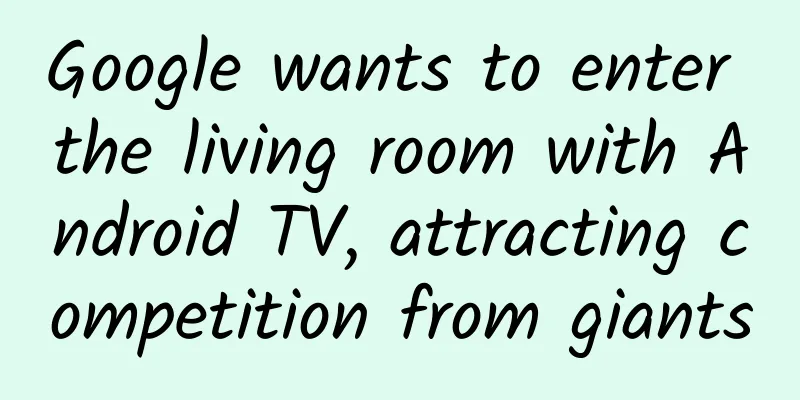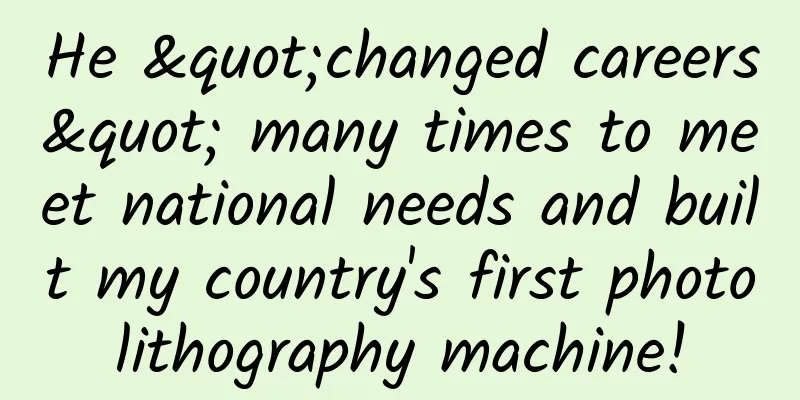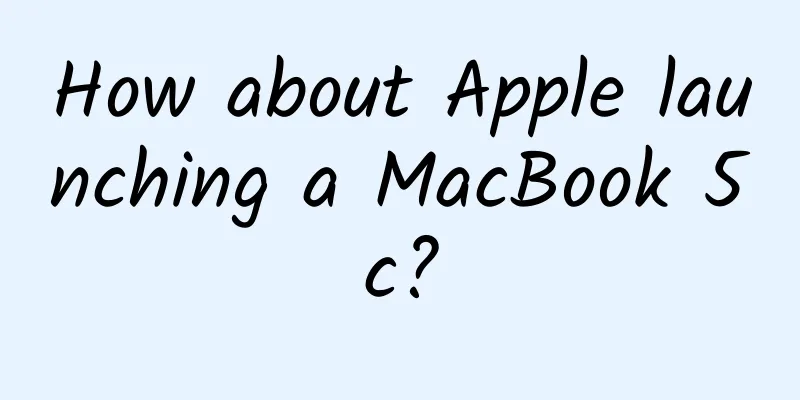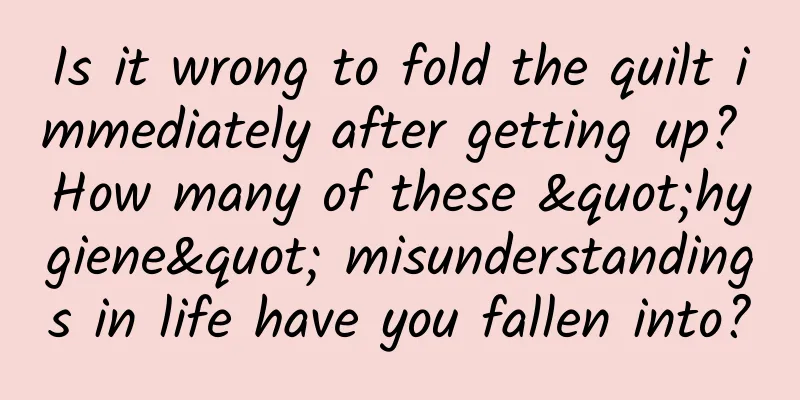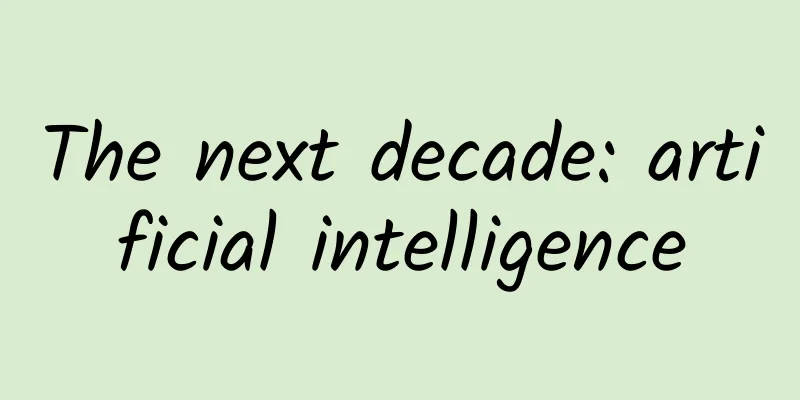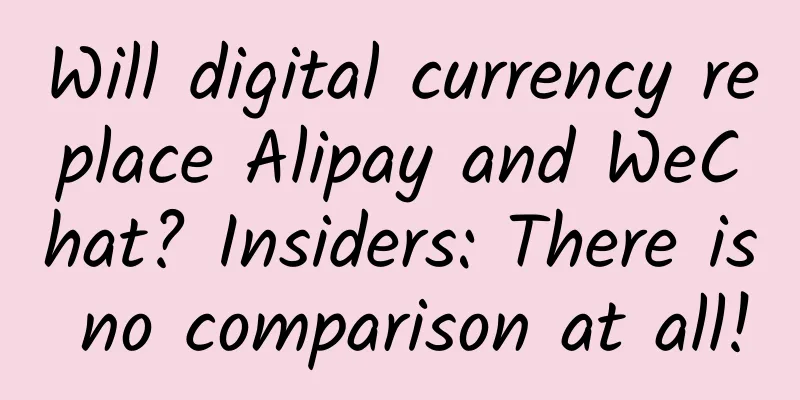Now that we have a direction, how should traditional media and emerging media be integrated?
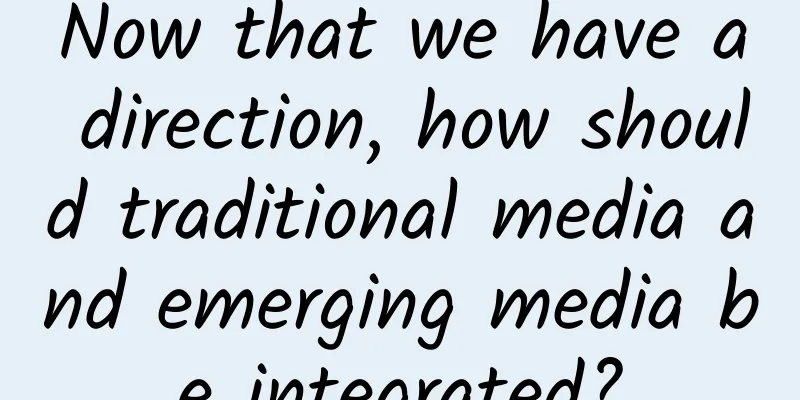
|
Recently, Xi Jinping presided over the fourth meeting of the Central Leading Group for Comprehensively Deepening Reforms and reviewed and approved the "Guiding Opinions on Promoting the Integrated Development of Traditional and New Media". Xi Jinping delivered a speech on this, emphasizing that efforts should be made to build a number of new mainstream media with diverse forms, advanced means and competitiveness, and to build several emerging media with strong strength, communication power, credibility and influence. The purpose of this meeting is to work together to implement the reform and advance the reform in earnest, so as to make a good start for the reform in the next few years. Against this background, Xi Jinping has made efforts to promote propaganda and strive to build a number of new media. What is his intention? How should it be done specifically? Media groups need to strengthen Some people believe that it is "very rare" for the Central Leading Group for Comprehensively Deepening Reform to discuss media reform, which means that the current media has become a kind of obstacle to the advancement of reform. Therefore, at the meeting focusing on the implementation of reform, the "construction of a new type of media group" was proposed. As for how the current media situation has hindered the advancement of reform, there are many different views from all walks of life: One view is that the current official media mouthpieces are slow to transform their roles and functions in the Internet era, are outside the laws of media communication in the Internet era, do not understand the mentality of netizens in the new era, and are accustomed to moralizing and ideologically attacking issues. "Guns" and "pens" have always been considered important tools for the Communist Party of China to seize and maintain its ruling position. In peacetime, the united front role of "pens" is more prominent. However, the thinking of the traditional official media in the revolutionary period always treats "pens" as "guns", and conducts political sweeps on specific disputes without political malice, making enemies everywhere. This rigid propaganda method not only loses the ability to communicate with the public, but also weakens the communication power, credibility, and influence of the official media itself, so that when the media needs to shout for reform, it often plays a counter-effect, not as a propeller, but as a stumbling block. Another view is that the bad habit of official media's stereotyped writing has become so deep that it is difficult to reverse it, adding "negative energy" to the reform image of this government. Today's official media articles often stand on the moral high ground and pretend to be pretentious, bringing out a bunch of theories of Marxism-Leninism, Mao Zedong, Deng Xiaoping and Jiang Zemin. The public neither understands nor wants to read them, which is completely inconsistent with Xi Dada's requirements and style. Xi Dada himself never uses stereotyped writing. Whether it is a speech or an article, it can be simple and clear, easy to understand, and even use some fashionable new words to be down-to-earth. What is even more unsatisfactory is that in the first year of Xi Dada's coming to power, many of his speeches were often taken out of context by the stereotyped writing of the official media mouthpiece when they were released, making them fragmented and ambiguous. As a result, Xi Dada, who originally had a clear reformist appearance, was inexplicably labeled as a "Mao-leftist" by the world for a long time. There is also a view that both traditional official media and new online media have defects that need to be corrected. The rigid appearance of traditional media has caused it to lose young readers and fail to spread the mainstream values that China needs among the most dynamic, vigorous and promising groups in society; the new technologies adopted by new media have alienated hundreds of millions of elderly people. Therefore, both traditional media and new media have huge fault zones and cannot effectively cover the entire population, resulting in the inability of propaganda forces to form an effective synergy. There is also a view that the Chinese media, which is prosperous on the surface but underdeveloped in reality, is inconsistent with China's image as a great power, which is an important reason why President Xi Jinping proposed to focus on building new media groups. China's hard power has risen, but its soft power has not kept up. China's dominant values have been repeatedly suppressed by Western values. In international public opinion, due to the weakness of Chinese media, China has repeatedly been put in a passive situation on international issues, greatly weakening China's voice. Therefore, building "several" new media groups to improve China's competitiveness and influence with diverse forms and advanced means is also an urgent task for the rise of a great power. Traditional media and new media are complementary As a trend in the development of the news and communication industry, media convergence is bound to become one of the theoretical hotspots in the industry. The first person to propose this concept was Ichir Soller Poole of Massachusetts Institute of Technology in the United States. In 1983, he proposed the "convergence of communication forms" in his book "Technology of Freedom". He believes that the development of digital electronic technology is the reason for the convergence of communication forms that have always been clearly divided. Its original meaning refers to the trend of various media showing multifunctional integration. Andrew Nachison, director of the American Press Institute's Media Research Center, defines media convergence as "a strategic, operational, and cultural alliance between print, audio, video, and interactive digital media organizations." The "media convergence" he emphasizes refers more to the cooperation and alliance between various media. From the above definitions, we can see that media convergence can be divided into narrow and broad meanings. The narrow meaning refers to the combination of media of different forms within the media industry to form a super-large media group, such as Murdoch 's media empire; the broad meaning refers to the convergence and integration of media and all other related elements, including the integration of media forms, media functions, communication methods, capital ownership, organizational structure and other elements. This article mainly studies the business integration between different media forms within the media industry, that is, between traditional media and new media. Media convergence had already begun long before the concept of "media convergence" was proposed. Today, media convergence has become an omnipresent social phenomenon that can bring profits, high-quality news services, and reduce costs, thus bringing competitive advantages to news organizations that implement convergence. The rapid rise of new media has broken the monopoly of traditional media. Traditional media has encountered an unprecedented survival crisis, with a decrease in audience, shrinking circulation, and declining economic benefits. In this new media environment, traditional media have to reposition their roles and seek a path to transformation. New media has quickly attracted the public's attention with its advantages such as fast and convenient, massive information, no restrictions on time and place, and low audience threshold. However, it must be admitted that new media does not have the status in the minds of the audience that traditional media has worked hard to maintain for decades, and the authority of traditional media is irreplaceable. Therefore, the integration of the two seems imminent. Their integration can not only complement each other's strengths and overcome each other's weaknesses, but also optimize resource allocation and maximize the communication effect. In the process of integration, first of all, we must give full play to the authority of traditional media in news dissemination. First, we must change the existing concept of news dissemination. People are no longer simply satisfied with only knowing the five elements of news events, but hope to understand the truth behind the facts. At this time, traditional media can give full play to their own advantages, do a good job in follow-up reports on news, and interpret news events in detail, authoritatively, and responsibly, so that the audience can understand more of the news truth through the perspective of the media, thereby giving full play to the public opinion guidance of traditional media. Second, traditional media should adapt to the public opinion characteristics of the audience's enthusiasm for participation in the omni-media era, deeply grasp the various public opinion tendencies of major news events, broaden their perspectives, and expand the influence of their own public opinion guidance. Third, traditional media should expand and strengthen their own brands. Only in this way can they continue to maintain their good image in the minds of the public and continue to exert their credibility and authority. Secondly, we should give full play to the timeliness and interactivity of new media in news dissemination. Timely information release and extensive audience participation are very important characteristics of new media in the process of information dissemination, and are also an advantage that traditional media cannot match. Because new media has grassroots netizens and network terminals all over the world, they can obtain first-hand information instantly and release it in a timely manner. Therefore, traditional media should use their own authority to actively combine with new media, give full play to the immediacy and interactivity of new media, and deliver information to hundreds of millions of audiences faster and more truthfully, so as to promote the development of journalism in the whole society. Thirdly, we should pay attention to the collection of online public opinion and the processing of news materials. In this diversified era, we are exposed to tens of thousands of pieces of information every day. How to screen the vast amount of information requires network editors to have certain basic news skills. First, we should act according to the laws of news and master the relevant policies; second, on this basis, we should reasonably and effectively integrate, optimize and re-create various news information, so that the news released can achieve the best communication effect. Finally, we should give full play to the role of public opinion guidance, resolve social contradictions and build a harmonious society. The integration of traditional media and new media is to learn from each other's strengths and weaknesses, give full play to advantages and maximize the communication effect. The media is also a tool for public opinion. Therefore, adhering to the correct public opinion orientation, actively guiding public opinion, gathering social forces and resolving social crises are the unshirkable responsibilities of the media and every media person. How to integrate traditional media with emerging media Emerging media is also a piece of land, a fertile land, so traditional media should work hard, keep up with the trend, gather hope, and win the harvest. If traditional media hold the following three open mindsets, then perhaps they are not far from Xi Jinping's requirements. Development is easy, but integration is not. Cherish it while you are at it. 1. We should closely follow the trend of new media and actively explore the new media market. From personal blogs in those days to programs and personal forums, and then to the later emerging Weibo and WeChat . The first thing to do is to have what others have, keep up with the trend, and use it when you have it, and use it in a distinctive and wonderful way. 2. Use the official Weibo and personal Weibo of traditional media to publicize programs, promote activities, interact closely, strengthen the stickiness with listeners and viewers, and cooperate with programs. Through new media, it is to achieve synchronous interaction with traditional media, as well as to release and summarize the information of traditional media in advance. Communication is the lowest level of new media application, just like the radio program in the past, from the development to the use of SMS platform with such new tools, in the forum, WeChat, Weibo, everyone can express their own opinions and suggestions while listening to the program, and the host can also more directly communicate with fans on these new media tools, increase the real-time interactive effect of the radio program, and also participate in and integrate into the production and dissemination process of the program. 3. Use mature software and tools of new media. Break the bottleneck of traditional media that is fleeting and cannot be preserved, face a broader space, have a longer life and win a better market reputation. Break the geographical restrictions of traditional media, further enhance the media influence in cyberspace and the personal influence of editors, reporters and hosts, and also give the fleeting traditional media a broader living space. For example, local TV stations upload all program videos on Tudou and Youku . For example, radio stations have in-depth cooperation with some online radio clients, using these online media to develop very mature multimedia brands that are very advanced in the field, and spread programs to all parts of the world through the Internet. And through in-depth cooperation and mutually beneficial cooperation, it provides a higher growth space for the integration of traditional media and new media. 4. Liberate your mind. Zhou Hongyi made a very vivid analogy. If you enter the Internet to compete with traditional thinking, it is no different from a shark crawling on land to fight a leopard, and you will definitely lose. For traditional media, there are several key points to remember when liberating your mind. First, users are supreme. Simply put, it is to make it very convenient for users to obtain news, feel good when experiencing all-round news reports, and enhance user stickiness. If you cannot gather a large number of users, there is no way to talk about influence. For the media, without influence, it is like a fish out of water. Second, tread on thin ice. The Internet era is an era of continuous innovation and subversion. Today's stars may be tomorrow's yellow flowers. Therefore, the integration of traditional media and new media must integrate news teams that have both news literacy and understand Internet technology, and must change the rigid news operation and editing process. In the digital era where the free economy is popular, there must be a supply of "scarce" content and "value-added" news services. Third, master new business models, aim at the right target, and avoid talking to yourself and entertaining yourself. We all know that the influence of the media is not only reflected in the number of users, but also in the commercial appeal. Mastering new business models can not only better expand the readership and enhance user stickiness, but also provide a solid material guarantee for the media to expand its own "territory". New media is not only a platform that can be used, but more importantly, it is a platform that can light up your new thinking. As traditional media, we should not fall behind in the new media era, and traditional media people should do the same. We should be a trendsetter in the new media wave and stand at the forefront. For traditional media, this is the worst time, but also the best time. Some traditional media will definitely be eliminated, and more traditional media will definitely become stronger. Who will be able to successfully integrate in the end? Let us wait and see. As a winner of Toutiao's Qingyun Plan and Baijiahao's Bai+ Plan, the 2019 Baidu Digital Author of the Year, the Baijiahao's Most Popular Author in the Technology Field, the 2019 Sogou Technology and Culture Author, and the 2021 Baijiahao Quarterly Influential Creator, he has won many awards, including the 2013 Sohu Best Industry Media Person, the 2015 China New Media Entrepreneurship Competition Beijing Third Place, the 2015 Guangmang Experience Award, the 2015 China New Media Entrepreneurship Competition Finals Third Place, and the 2018 Baidu Dynamic Annual Powerful Celebrity. |
<<: A “bargain price” mobile phone can also make money at 599 yuan
>>: Apple's stock price hits a new high: Should we cheer?
Recommend
Chuchujie CEO, a post-85s generation’s experience in managing millions of fans
The first time I met Lu Jinjie was at the Tencent...
An Luqin: MADE Industry Research Price/Discount Index Trend Report in May 2024
The MADE Industry Research Price Index is publish...
Live | B&Q front-end architect Chen Guoxing: How to build isomorphic applications using React
[51CTO.com original article] With the development...
Analysis of short video operation methods
Accounts related to agriculture, rural areas and ...
Volume and price both fall, high-end products are not immune? Casarte air conditioner may become the biggest winner
In the past two years, the epidemic has had a pro...
Detailed explanation of marketing hot spots in November!
October is almost over and I’m feeling anxious. E...
Apple releases iOS 17.0.2 official version again
Apple just pushed out iOS 17.0.2 last Friday, whi...
How to create a hit event?
Many event operators dream of creating a hit even...
Sony PS VR experience: comfortable to wear, but the controller is terrible
Although this is not the first time we have seen ...
Psychological Effects: Gamification Strategies Based on User Growth
The gamified user growth plan explored through ps...
iQIYI Product Analysis Report
Based on the conclusions drawn from the previous ...
Geek Park: Alibaba Cloud and Huawei Cloud were successfully selected for the 2023 "China Innovation Force 50 List (InnoForce 50)"
Recently, Geek Park, China's largest innovato...
2021 Douyin does not require fans to open a showcase (how to open a product showcase with 0 fans)
01. Douyin launches product showcase I believe al...
Will driverless cars replace taxis?
Ride-hailing app Uber announced yesterday that it...
Analysis report on competitive products of Dewu and Shihuo
This is my first attempt at writing a competitive...


